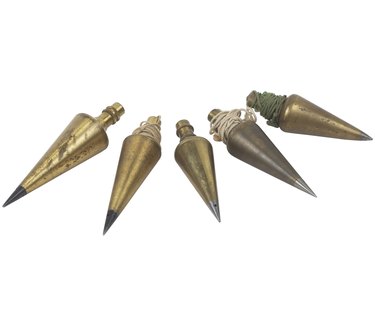Things You'll Need
Magnet
Plastic gloves
Lint-free cloth
2 cups warm water
2 tablespoons of mild dish soap
2 tablespoons lemon juice
Pinch of salt or baking soda
Fine-grade steel wool

Brass is a beautiful but delicate metal that tarnishes easily if certain chemicals, such as human body oils, touch it. Grandfather clock brass weights may be simply coated with brass that may tarnish but also rust due to the metal under the brass. The coating on the weight is very thin, which allows for the metal underneath to get exposed to the elements and rust. Place a magnet on the brass weights to determine if it is actually brass, which is not magnetic; the magnet will fall off if the weight is made only of brass.
Brass-plated Weight
Step 1
Place a magnet on the weight. If the magnet stays attached, the weight is a metal weight with either a brass plating or painted a brass color.
Video of the Day
Step 2
Rub the weight with a fine-grade steel wool in small, gentle strokes to remove the rust spots.
Step 3
Wipe the weight with a clean, lint-free cloth to remove rust particles and buff the weight.
Solid Brass Weight
Step 1
Place a magnet on the weight. If the magnet falls off the weight rather than staying attached, then the weight is solid brass and the rust is actually simply tarnish.
Step 2
Clean the weight with a solution of 2 cups of warm water and 2 tablespoons of mild dishwashing soap. Clean the weight thoroughly and soak it for 5 to 10 minutes if necessary to remove grime.
Step 3
Mix 2 tablespoons of lemon juice and a pinch of salt or baking soda into a paste. Rub the paste on the brass grandfather clock weight with a lint-free cloth to polish the brass.
Step 4
Rinse the weight in warm water until the paste is completely cleared.
Step 5
Dry the weight with a clean, lint-free cloth.
Tip
To refurbish a brass-plated weight, you can hire a brass-plating company to replate the weights or repaint them with brass-colored paint. Painting the weight is much less expensive than getting the weight brass plated.
Video of the Day